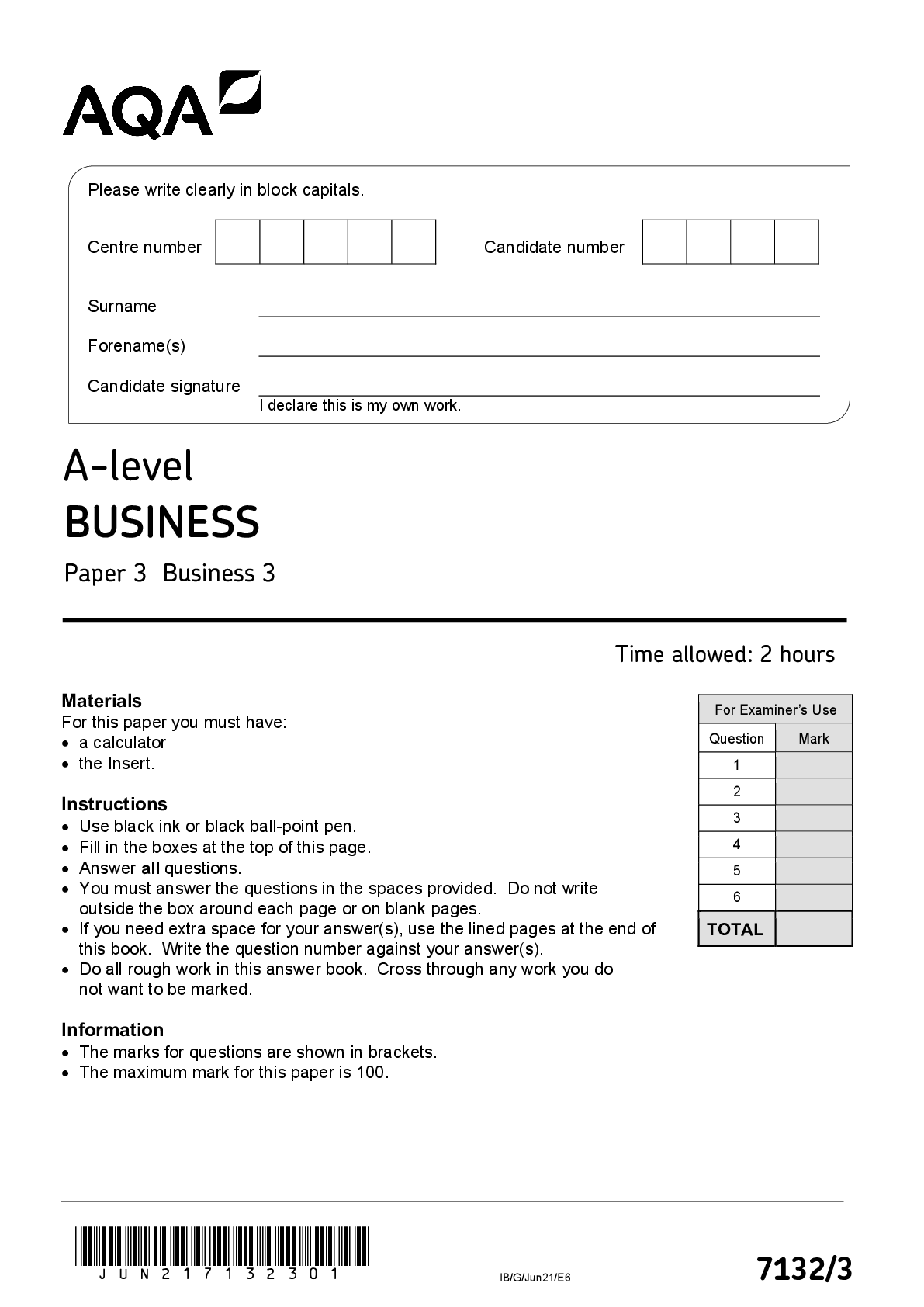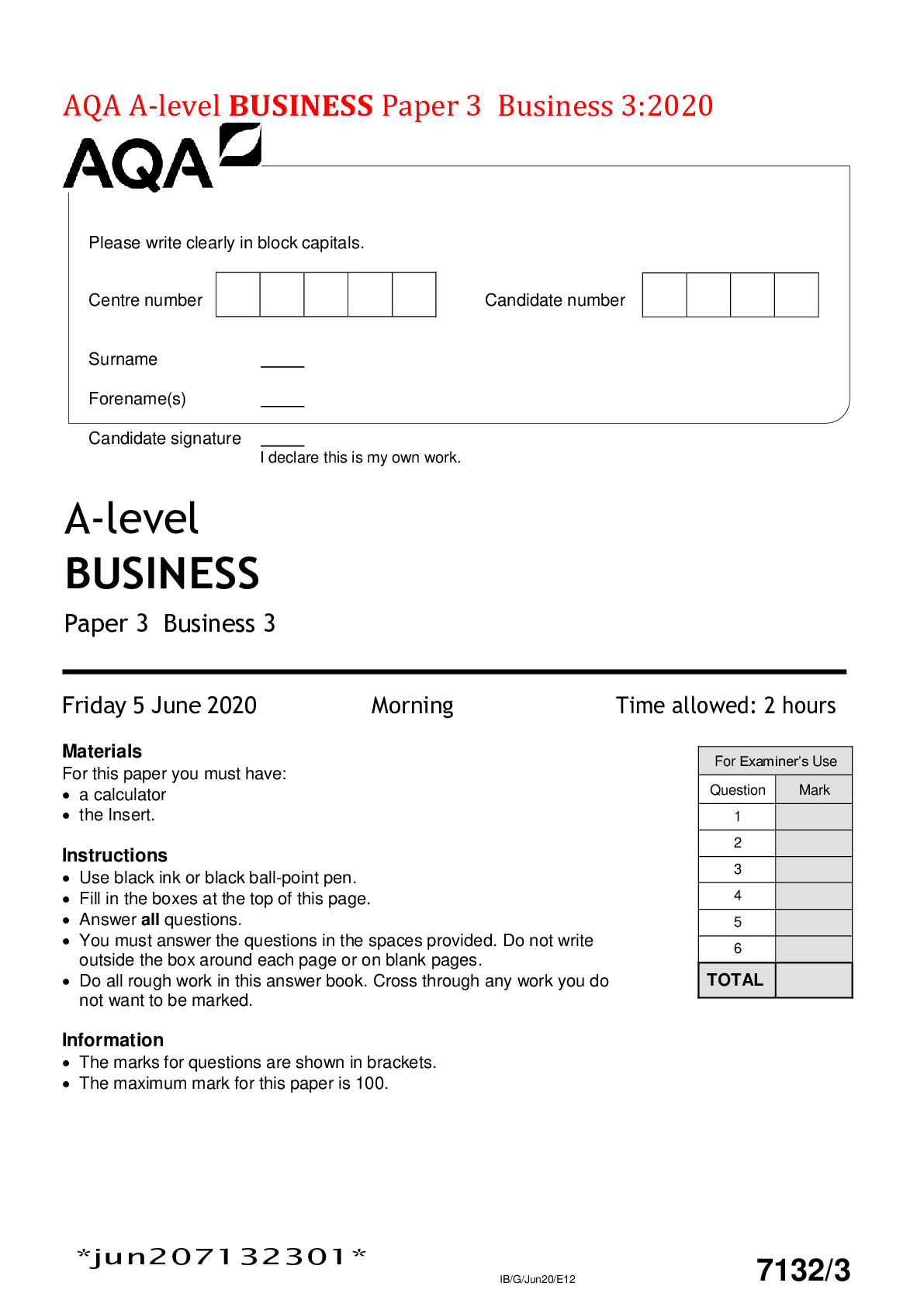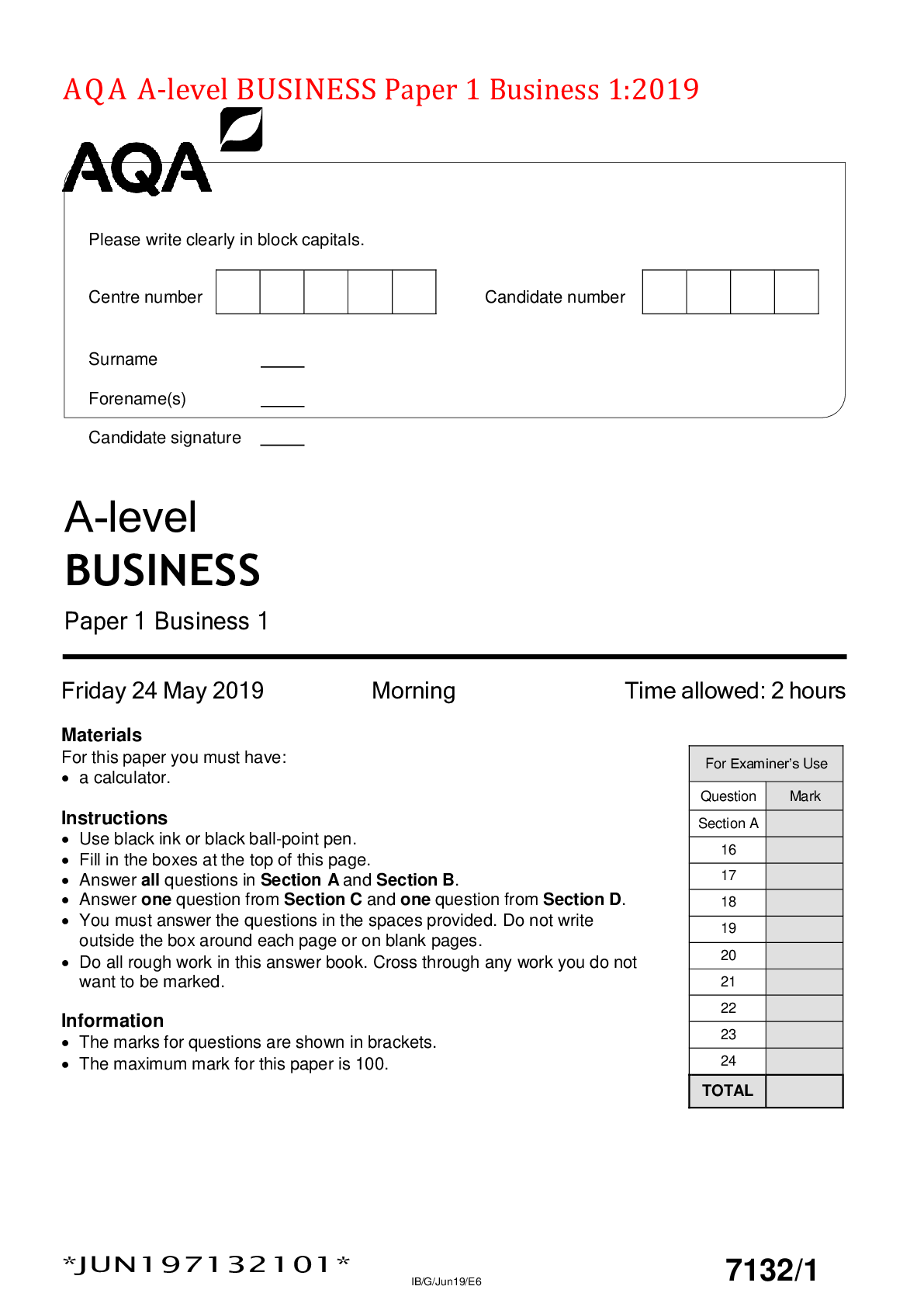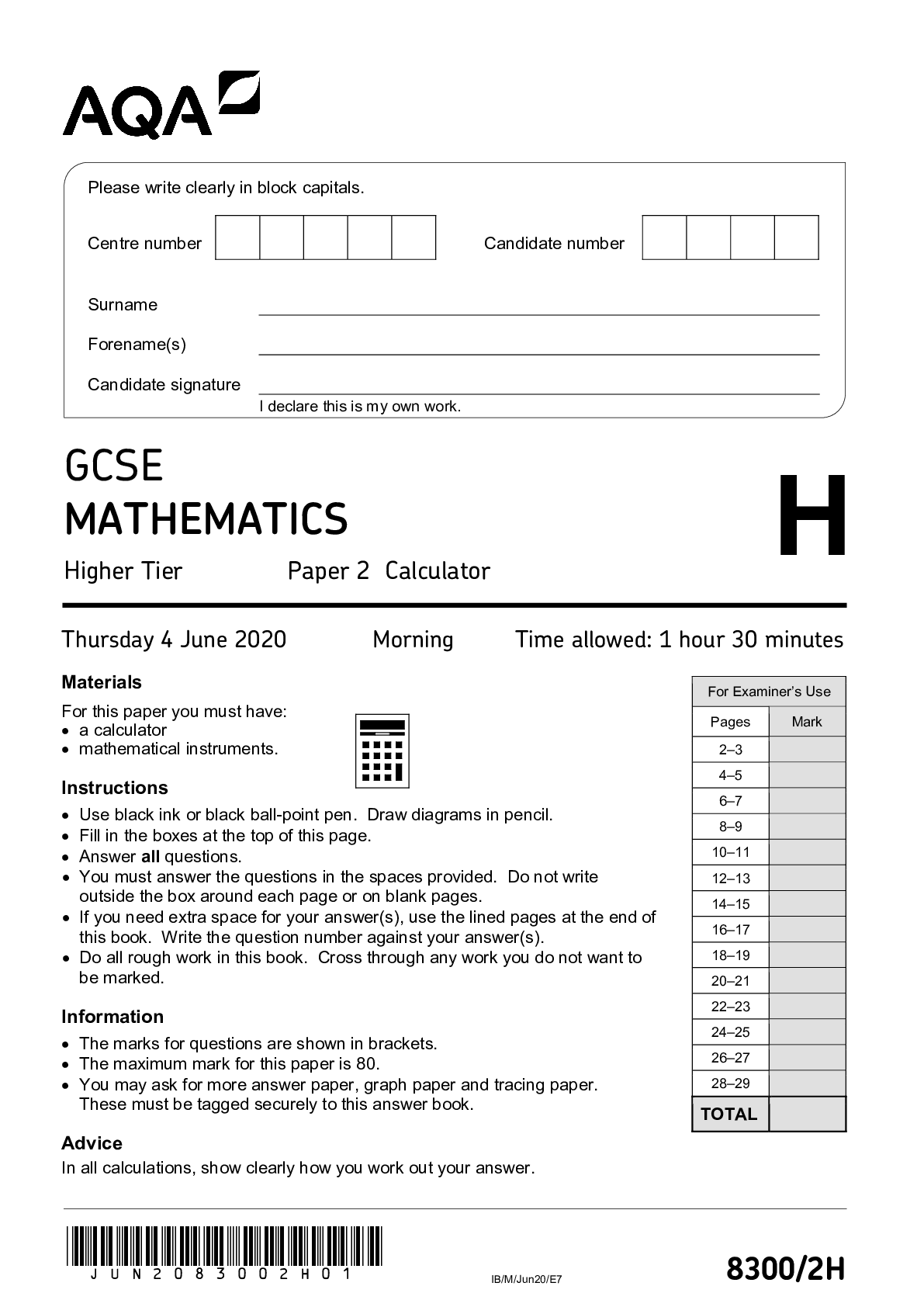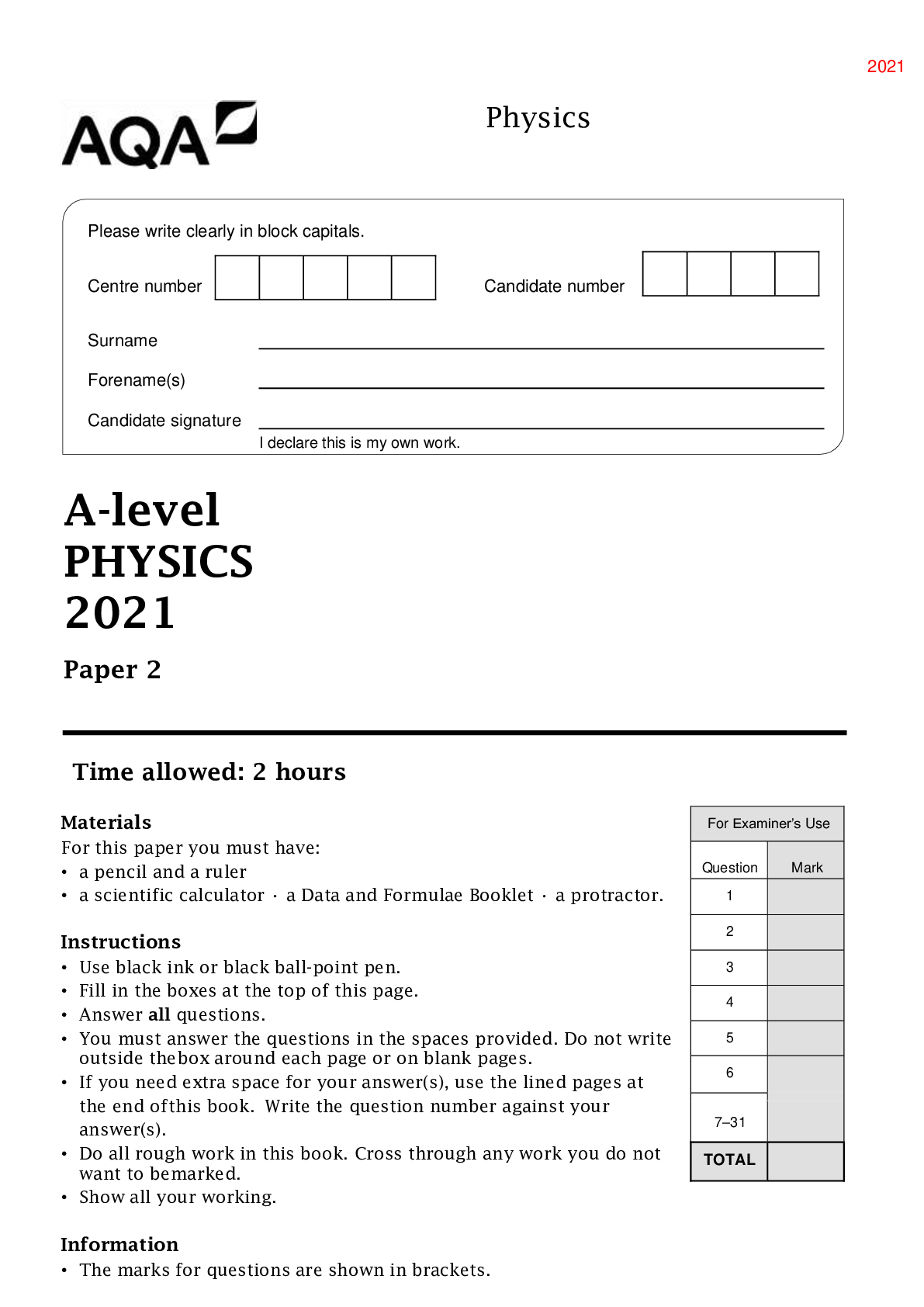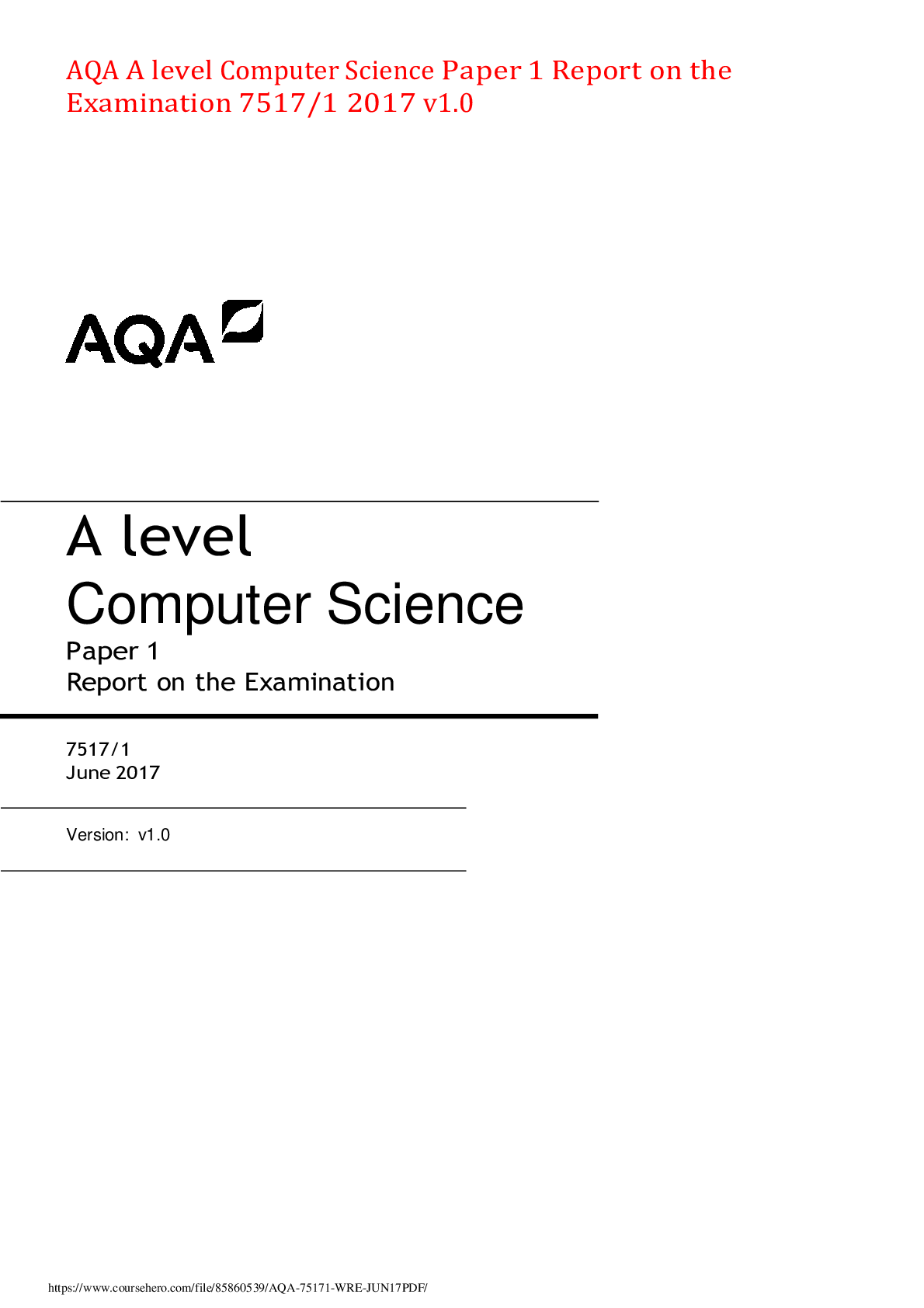*NURSING > AQA Question Papers > NUR2392: Multidimensional Care II (All)
NUR2392: Multidimensional Care II
Document Content and Description Below
NUR2392: Multidimensional Care II Running head: MODULE 5 WRITTEN ASSIGNMENT 1 Acid-Base Imbalance Scenario Rasmussen College NUR2392: Multidimensional Care II DateACID-BASE IMBALANCE SCENARIO 2... Normal values versus Tony’s values • Normal pH range: (7.35-7.45) Tony’s pH: 7.28 (Low-acidic) • Normal PaCO2 range: (35-44 mmHg) Tony’s PaCO2: 55 mmHg (High-acidic) • Normal PaO2 range: (75-100 mmHg) Tony’s PaO2: 70 mm Hg (Low) • Normal HCO3 range: (22-26 mEq/L) Tony’s HCO3: 30 mEq/L (High-basic) • Normal SpO2 range: (95%-100%) Tony’s SpO2: 84% (Low) • Normal HR range: (60-100 BPM) Tony’s HR: 115 BPM (High) • Normal BP: 120/80 Tony’s BP: 90/40 (Low) • Normal RR: 12-20 Breaths per minute Tony’s RR: 36 breaths per minute; labored (High) Medical History • COPD • Asthma • Diabetes Determine Tony’s acid-base imbalance Tony is experiencing partially compensated respiratory acidosis. “Respiratory acidosis occurs when the respiratory function is impaired and the exchange of O2 and CO2 is reduced, which causes CO2 retention, and leads to the same increase in hydrogen ion levels and acidosis” (Rebar, Ignatavicius, Workman, p. 192, 2017). With a pH less than 7.35, HCO3 greater than 26 mEq/L, and PaCO2 greater than 44 mmHg, the respiratory function is impaired, causing problems with oxygen and carbon dioxide. The body is attempting to correct the imbalance, but the blood pH remains abnormal in spite of the attempt. Partially compensated imbalances occur when compensation mechanisms are activated but have not had sufficient time to normalize the blood pH, (Barnett, 2007).ACID-BASE IMBALANCE SCENARIO 3 Describe possible causes of the imbalance An elevated partial pressure of arterial carbon dioxide (PaCO2) is the primary problem for compensation of respiratory acidosis, which results in the pH being less than 7.35, (Rasmussen College, 2020). Compensation is the body’s attempt to recover from the primary disorder to achieve homeostasis. The kidneys will compensate by excreting more hydrogen ions and retaining HCO3 which will increase in order to move the pH back to normal, (Rasmussen, 2020). The pH is low because of the increased amount of free hydrogen ions in the blood, (Rebar, Ignatavicius, Workman, p. 194, 2017). The metabolic system is trying to increase the bicarbonate (HCO3) to help balance out the acidotic conditions by trying to make the blood more basic; therefore, the blood pH will be pushed higher to make it normal. “The PaO2 is low and PaCO2 is high because the pulmonary problem impairs gas exchange, causing poor oxygenation and CO2 retention,” (Rebar, Ignatavicius, Workman, p. 194, 2017). The kidneys then increase retention of HCO3 (making it more basic) and excretion of acid occurs to counteract the acid represented by the pH, (Barrett, 2007). The kidneys and lungs play a major role in the compensation process in order to correct the pH. The lungs are extremely sensitive to changes in pH and react within seconds to the imbalance by altering respiratory rate, which we have here with patient Tony, (Rasmussen, 2020). The kidneys are slower to react to the changes in pH and are more powerful but takes days to correct the imbalance. COPD and asthma are major factors in Tony’s diagnosis because the air inhaled and exhaled from the lungs does not get adequately exchanged between the carbon dioxide from the body for oxygen from the air. COPD causes the bronchial tubes and air sacs to lose their elasticity and over expand, which leaves some air trapped in the lungs when a person exhales, causing impaired and reduced gas exchange, (Rebar, Ignatavicius, Workman, p. 572, 2017).ACID-BASE IMBALANCE SCENARIO 4 Signs & symptoms Tony is exhibiting as a result of the acid-base imbalance • Cough, fever • Exhaustion/fatigue • Hypotension • Tachycardia • Hypoxemia, Hypercapnia • Dyspnea with exertion • Tachypnea, labored Multidimensional care strategies for Tony’s care Care occurs in a hospital setting because respiratory acidosis is a symptom or complication of another health problem. Interventions include: • Drug therapy- focused on improving ventilation and gas exchange rather than directly altering pH. This includes bronchodilators, anti-inflammatories, and mucolytics. • Oxygen therapy- helps promote gas exchange for patients with respiratory acidosis. Monitoring oxygen saturation levels to ensure that the lowest flow of oxygen that prevents hypoxemia is used to avoid oxygen-induced tissue damage. • Ventilation support- mechanical ventilation may be needed for patients that cannot keep their oxygen saturation at 90% or who have respiratory muscle fatigue. • Pulmonary hygiene- exercises and procedures that helps clear the lung’s airways of mucus and other secretions. This ensures that the lungs get enough oxygen and the respiratory system works efficiently. • Preventing complication- nursing priority when caring for this patient. Monitor breathing status hourly and intervening when changes occur are critical in preventingACID-BASE IMBALANCE SCENARIO 5 complications. Listening to breath sounds and assess how easily air moves into and out of the lungs. Check for muscle retraction, the use of accessory muscles, and whether breathing produces a grunt or wheeze that can be heard without a stethoscope. (Rebar, Ignatavicius, Workman, p. 195, 2017) • Auscultate breath sounds to identify areas of decreased ventilation (atelectasis) or airway obstruction and changes as patient deteriorates or improves, reflecting effectiveness of treatment dictating therapy needs. • Monitor respiratory rate, depth, and effort. Alveolar hypoventilation and associated hypoxemia lead to respiratory distress or failure. • Monitor heart rate and rhythm. Tachycardia develops early because the sympathetic nervous system is stimulated, resulting in the release of catecholamines, epinephrine, and norepinephrine, in an attempt to increase oxygen delivery to increase oxygen delivery to the tissues. Dysrhythmias that may occur are due to hypoxia and electrolyte imbalances. • Encourage and assist with deep-breathing exercises, turning, and soughing. Suction as necessary. Provide airway adjunct as indicated and place in semi-Fowler’s position. These measures improve lung ventilation and reduce or prevent airway obstruction associated with accumulation of mucus. • Monitor and graph serial ABGs, pulse oximetry readings; Hb, serum electrolyte levels. This evaluates therapy need and effectiveness. Bedside pulse oximetry monitoring is used to show early changes in oxygenation before other signs or symptoms are observed. • Provide appropriate chest physiotherapy, including postural drainage and breathing exercises. This aids in clearing secretions, which improves ventilation, allowing excess CO2 to be eliminated, (Vera, 2019).ACID-BASE IMBALANCE SCENARIO 6 References Barnett, James. (May 2007). Interpretation: Compensated and Uncompensated Blood Gas Analysis. Vanderbilt University Medical Center [PowerPoint slides]. Retrieved from https://slideplayer.com/slide/4651042/ [Show More]
Last updated: 1 year ago
Preview 1 out of 6 pages
Instant download
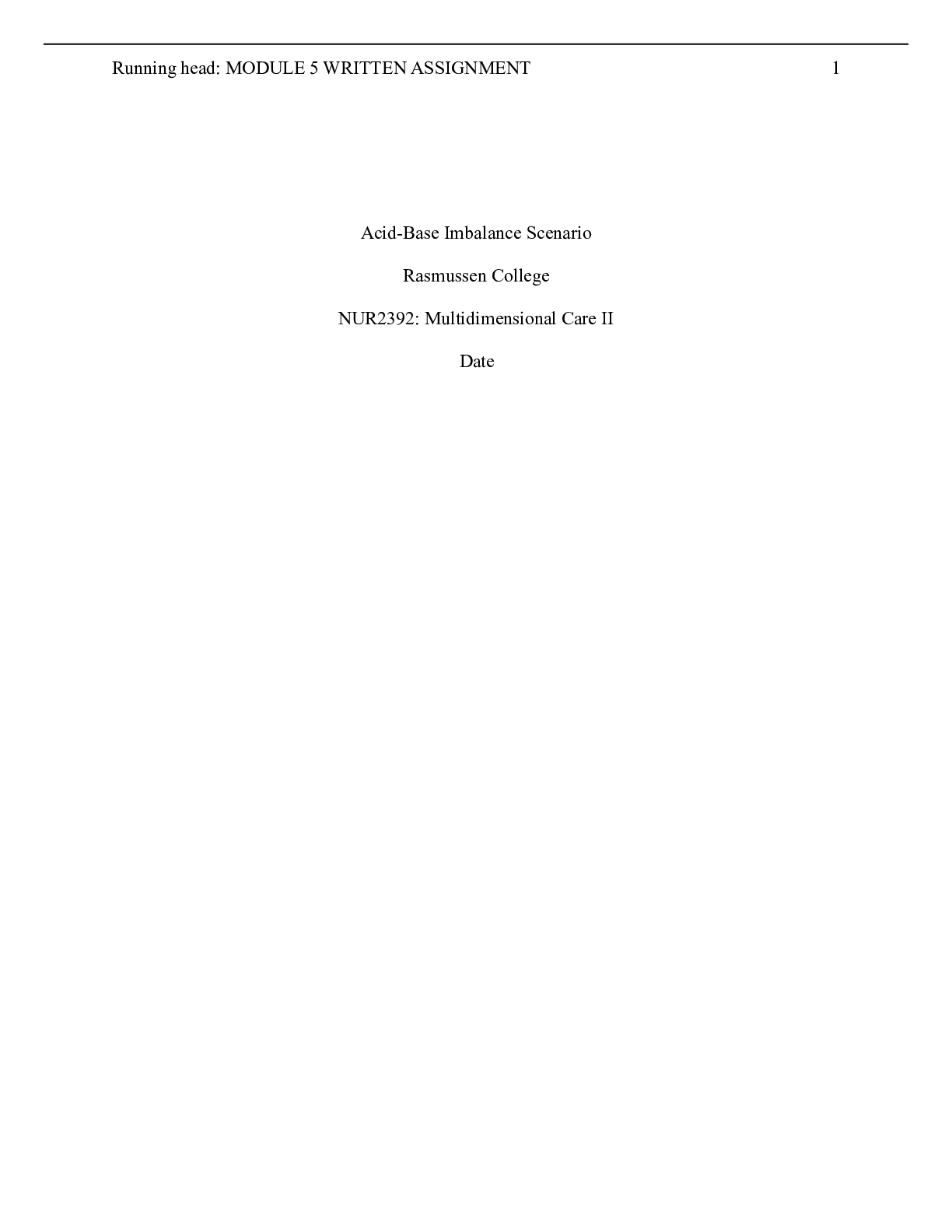
Buy this document to get the full access instantly
Instant Download Access after purchase
Add to cartInstant download
Reviews( 0 )
Document information
Connected school, study & course
About the document
Uploaded On
Apr 13, 2022
Number of pages
6
Written in
Additional information
This document has been written for:
Uploaded
Apr 13, 2022
Downloads
0
Views
81


.png)
